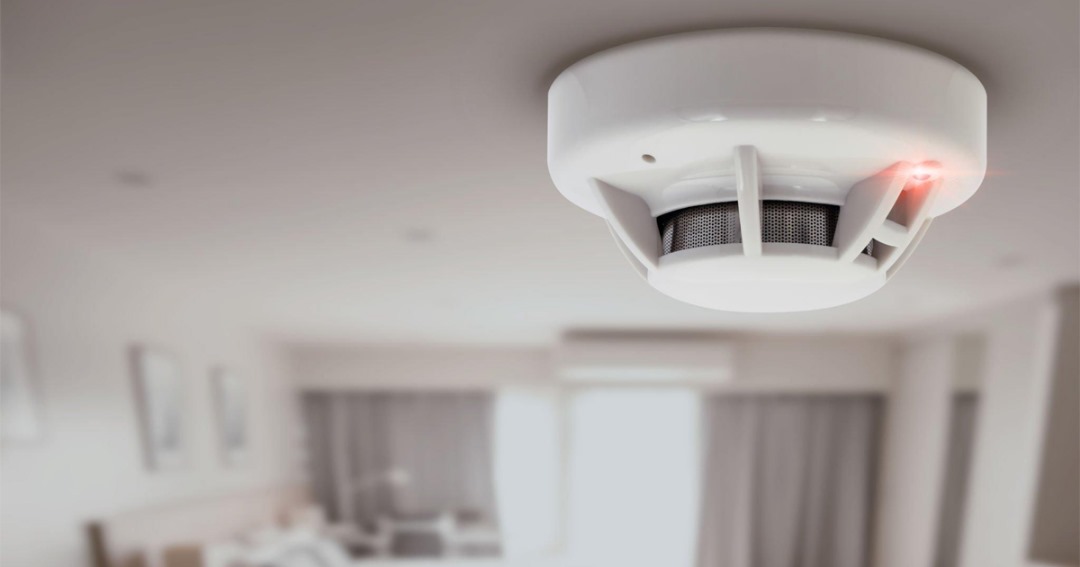Fires pose a devastating threat that can strike anyone, anywhere, at any time. Between the months of January and April in 2023, a staggering 79 recorded fire incidents tore through 46 overcrowded Internally Displaced Persons (IDP) camps, leaving 7,091 households, equivalent to 35,750 individuals stranded in the wake of destruction. Even more alarming, data from the Federal Fire Service indicates that the country suffered property losses exceeding N23.3 billion due to fire outbreaks between October and December 2022. This goes to show that Fireproofing is just as important as insuring your car.
However, in the face of this destructive force, there is hope. With the right knowledge and precautions, many of these fires can be prevented or at least contained to minimize their impact. One essential step in this direction is to fireproof your home. This guide explores two fundamental approaches to achieving this: Passive Fire Protection and Active Fire Protection.
Read also: All You Need to Know About Soundproofing Your Home
Passive Fire Protection
Passive Fire Protection involves the use of building materials designed to curb the spread of fire. These materials act as a built-in defense mechanism against flames, creating fire-resistant barriers within structures.
Here are some methods employed in passive fire protection:
1. Intumescent Coatings
These specialized coatings expand and thicken when exposed to heat, creating an insulating barrier that shields against fire. Intumescent coatings can be applied to surfaces such as columns, beams, floors, roofs, valves, tanks, and metal pipes.
2. Firestop Fireproofing
This type of sealant is added during the construction phase to seal joints or gaps between walls, connections, or areas where walls meet ceilings. It acts as a barrier to prevent fire and smoke from spreading.
3. Spraying of Cementitious Products
Thick, plaster-like barriers are formed when cementitious products are sprayed onto surfaces, including the foundation. This fireproofing technique safeguards the foundation from warping or collapsing under high heat. By protecting the structural integrity of the building, it helps prevent catastrophic damage during a fire.
Passive fire protection measures are designed to contain fires and smoke within specific areas, effectively preventing the rapid spread of flames throughout a structure.
Read also: The Evolution of Luxury Real Estate
Active Fire Protection:
Active Fire Protection involves manual interventions and tools to both prevent and combat fire outbreaks. These measures often include automatic responses to fire or detected smoke. Below are examples of active fire protection measures:
1. Install Smoke Detectors
Smoke detectors are indispensable for home fire safety. They are designed to detect the presence of smoke and emit alarms, providing occupants with critical time to evacuate. It’s recommended to install smoke detectors in every bedroom, outside each sleeping area, and on every level of the home, including the basement. Regular testing ensures their proper functioning.
2. Maintain Heating and Cooling Systems
Improperly maintained heating and cooling systems can become fire hazards. It’s crucial to have these systems inspected and cleaned by professionals annually. Additionally, keeping flammable materials like clothes, paper, and cleaning supplies away from these systems can prevent potential fires.
3. Use Fire Retardant Materials
Fire retardant materials resist ignition and slow down or halt the spread of flames. Applying fire retardant sprays to items such as curtains, upholstered furniture, and bedding can reduce the risk of fire spread.
4. Install Fire Resistant Doors and Windows
Fire-resistant doors and windows act as barriers between rooms and the external environment, impeding the spread of fire. These are typically constructed from materials like steel or fire-rated composites, which are not easily combustible.
5. Keep Flammable Materials Away from Electrical Outlets
Electrical outlets can overheat and ignite fires, especially if overloaded or in the presence of flammable materials. Preventive measures include keeping materials such as paper, clothing, and curtains at a safe distance from electrical outlets and avoiding overloading outlets with extension cords or power strips.
The Benefits of Fireproofing the Home
Embracing fireproofing measures yields several invaluable advantages:
1. Protection of Lives and Property
Foremost, fireproofing enhances safety by safeguarding the lives of occupants and reducing the risk of injuries. Early detection and containment of fires prevent widespread property damage.
2. Saves Money
The financial repercussions of home fires can be exorbitant. Fireproofing reduces the likelihood of fires occurring, potentially saving homeowners thousands of dollars in damages and repair costs.
3. Peace of Mind
Knowing that your home is fireproofed offers peace of mind, alleviating stress and concerns about potential fire-related disasters. This sense of security can also contribute to improved mental health and overall well-being.
Conclusion:
In conclusion, fires are indiscriminate and can affect anyone. However, with the right precautions and knowledge, the risk of fires can be substantially reduced. Fireproofing your home is a pivotal step in minimizing this risk and mitigating potential damages. By diligently following these steps, you not only protect yourself, your loved ones, and your property but also contribute to a safer and more secure community. Remember, fireproofing your home is not merely a precaution; it’s an act of responsibility, a commitment to safeguarding what matters most.
References:
1.https://www.hdfcergo.com/blogs/home-insurance/fireproofing-your-home


